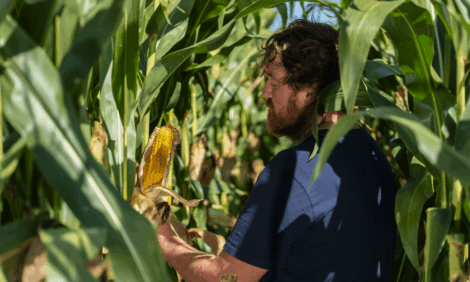



Longitudinal Study on Morbidity and Mortality in White Veal Calves in Belgium
In a rare study of the health of veal calves reared commercially, researchers based in Ghent found an average mortality rate of just over five cent in the 15 groups they studied.The average was higher for beef breeds than dairy or crossbreds, pneumonia was the main cause of mortality and peak morbidity was in the first three weeks after arrival.
Mortality and morbidity have been rarely documented in the white veal industry, despite high levels of antimicrobial drug use and resistance, according to a paper by Bart Pardon of Ghent University in Belgium and co-authors there and at Animal Health Service–Flanders published in BMC Veterinary Research recently.
The objective of their study was to determine the causes and epidemiology of morbidity and mortality in dairy, beef and crossbred white veal production. A total of 5,853 calves, housed in 15 production cohorts, were followed during one production cycle. Causes of mortality were determined by necropsy. Morbidity was daily recorded by the producers.
Total average mortality was 5.3 per cent and it was significantly higher in beef veal production than in dairy or crossbreds.
The main causes of mortality were pneumonia (1.3 per cent of the calves at risk), ruminal disorders (0.7 per cent), idiopathic peritonitis (0.5 per cent), enterotoxaemia (0.5 per cent) and enteritis (0.4 per cent). Belgian Blue beef calves were more likely to die from pneumonia, enterotoxaemia and arthritis. Detection of bovine viral diarrhoea virus at necropsy was associated with chronic pneumonia and pleuritis.
Of all the calves, 25.4 per cent was treated individually and the morbidity rate was 1.66 cases per 1,000 calf days at risk. The incidence of respiratory disease, diarrhoea, arthritis and otitis was 0.95, 0.30, 0.11 and 0.07 cases per 1,000 calf days at risk, respectively.
Morbidity peaked in the first three weeks after arrival and gradually declined towards the end of the production cycle.
The present study provided insights into the causes and epidemiology of morbidity and mortality in white veal calves in Belgium that were housed in the most common type of system in Europe, concluded Pardon and co-authors. They added that necropsy findings, identified risk periods and differences between production systems can guide both veterinarians and producers towards the most profitable and ethical preventive and therapeutic protocols.
Reference
Pardon B, K. De Bleecker, M. Hostens, J. Callens, J. Dewulf and P. Deprez. 2012. Longitudinal study on morbidity and mortality in white veal calves in Belgium. BMC Veterinary Research. 8:26. doi:10.1186/1746-6148-8-26
Further Reading
| - | You can view the full report (as a provisional PDF) by clicking here. |
May 2012


